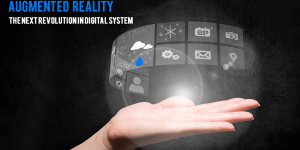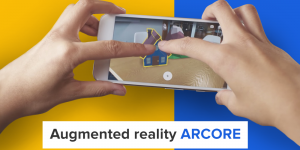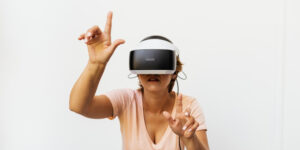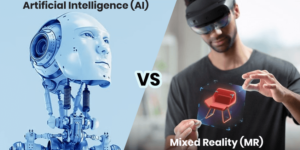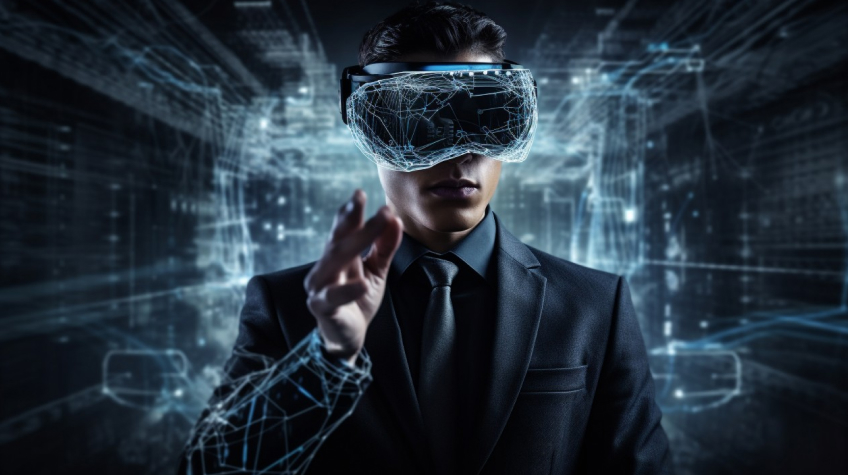
The internet, computers, and mobile phones have undeniably reshaped our world, connecting people from all corners and revolutionizing the way we access information, communicate, and conduct business. Looking ahead, the next wave of technological transformation is poised to be driven by Virtual Reality (VR) and Augmented Reality (AR). These immersive technologies are set to play a key role in accelerating human learning and innovation. With the power to transport individuals to diverse environments and scenarios, VR is on the verge of unlocking unexplored possibilities for human development.
AI-powered AR and VR experiences are poised to revolutionize various aspects of our lives, particularly by creating adaptive learning environments that cater to individual needs and performance. This can help you learn better and pick up new skills and knowledge faster. Although it may seem like AI is a recent technological development, its roots date back to the early 1900s. The groundwork laid by early experts in diverse fields paved the way for the significant advancements made in AI during the 1950s.
From Science Fiction to Reality: The World-Altering Potential of AI in VR and AR
1. VR/AR Democratizes Real-time Experiences
Augmented Reality enriches our real-world surroundings with computer-generated visual elements, sounds, and stimuli, offering users more immersive experiences than ever before. It offers users a more immersive and enriched experience, going beyond what is possible in the physical world. By seamlessly integrating virtual and real-world elements, AR empowers users to engage with information and environments in innovative ways, making learning and experiences more accessible and enjoyable.
2. Improved Natural Language Processing and Voice Recognition
AI’s advancements in Natural Language Processing (NLP) and voice recognition are poised to revolutionize AR and VR experiences. Users will interact with virtual characters and environments using natural language, making these experiences more intuitive and seamless. This breakthrough will pave the way for more accessible and personalized interactions, allowing users to engage with virtual content in a more human-like manner.
Also Read: Natural Language Processing Examples: NLP Applications
3. Enhanced User Interactions
AI is set to play a key role in enhancing user interactions within immersive technologies, enabling more precise gesture recognition and context-aware interactions. By analyzing user movements, expressions, and actions, AI can understand user intentions and deliver appropriate responses. This leads to more natural and intuitive interactions with virtual content, creating a truly immersive experience.
4. Use of AR/VR in Real Estate Marketing
Marketing properties that are not yet constructed has always been a challenge for real estate developers. Prospective buyers struggle to visualize a home that doesn’t exist in reality. Traditional marketing methods often involve costly showrooms with full-scale models, which demand significant investments of time and money. However, the emergence of real estate technology has provided a solution. Real estate agents can now use VR and virtual staging to showcase both the exterior and interior of properties that are still in the planning or construction phase. This technology allows potential buyers to gain a clear and immersive understanding of the properties on offer, making the decision-making process easier and more informed.
5. Enables Ability to Work From Anywhere

The evolving work landscape suggests a growing trend towards remote work. VR can play a pivotal role in this shift, enabling employees to be productive from any location with an internet connection. Virtual offices, equipped with features like shared virtual spaces, large screens for desktop sharing, virtual whiteboards, and more, create a sense of physical co-presence, fostering collaboration and productivity. Beyond the virtual office, businesses are utilizing VR for design reviews, customer support, meetings, data analysis, and more, offering opportunities for cost savings and enhanced efficiency.
6. VR/AR Provides Access to Immersive Learning From Anywhere
Immersive learning is redefining education, offering students the chance to experience subjects in a more profound and interactive way than traditional methods. Virtual Reality allows global collaboration among students and professionals separated by vast distances. It facilitates shared experiences, where participants can interact with virtual objects as if they were in the same physical space. Many educational institutions have integrated VR into their curriculum, and businesses are using it to train employees on new equipment, procedures, and skills, making learning more engaging and effective.
7. Effective Use of VR/AR in Malls
Implementing Augmented Reality in shopping centers can bring numerous advantages, including:
- Augmented Reality maps that guide visitors and help them navigate more effectively.
- Online catalogs of retail outlets using AR to project products to customers, providing a clearer view of what’s on offer.
- Demonstrating the potential of reality-altering concepts, offering a glimpse of the transformative power of AR.
Closing Thoughts
AI and immersive technologies like VR and AR are driving significant changes in our world. As we look to the future, we can anticipate further adoption of AI across businesses of all sizes, transforming the workforce, and introducing new opportunities. From robotics to autonomous vehicles and beyond, these innovations will continue to shape our reality in profound and unexpected ways, ushering in a future that is increasingly connected and immersive.

